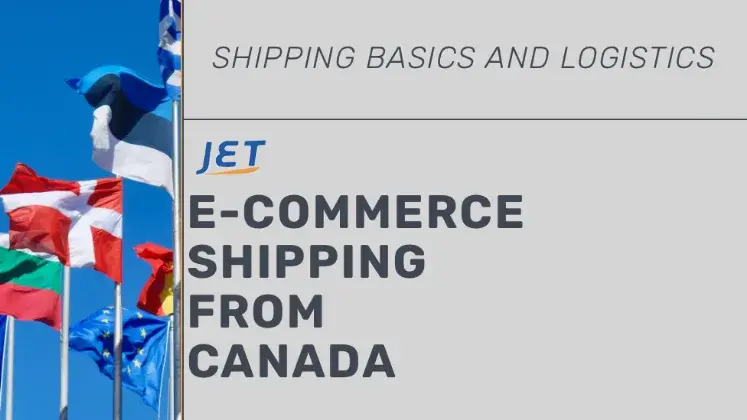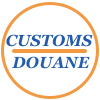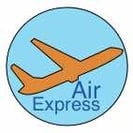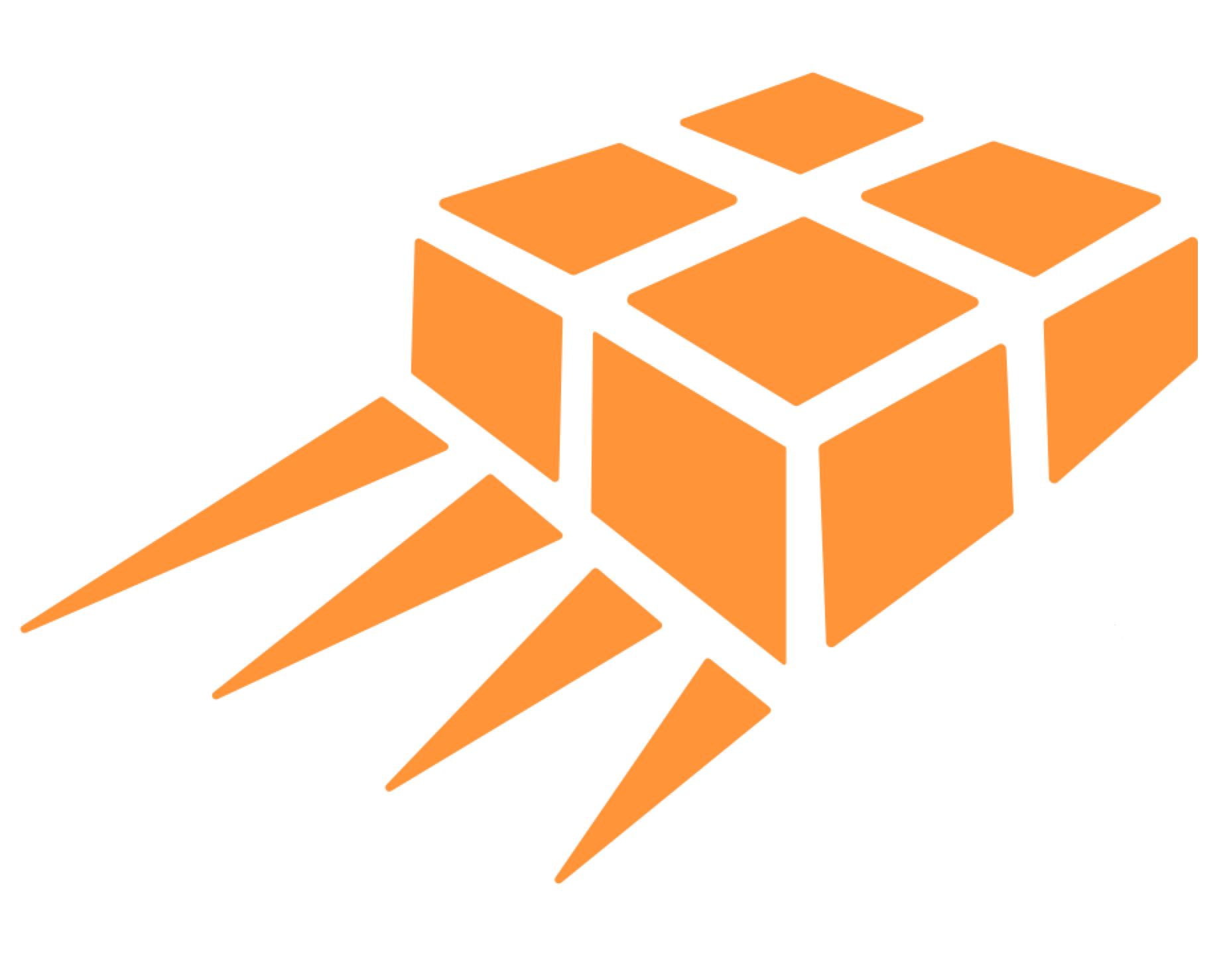
Worldwide Shipping E-commerce Orders from Canada
Shipping a parcel internationally for the first time can be an overwhelming process. Where to start? How do I ensure it arrives safely, in tact and on time? Jet Worldwide provides shipping solutions for over 40 years. Our industry expertise offers best in class shipping solutions for online orders.
Set Expectations with your recipient.
This is a big one! The recipient, after all, will serve as the importer of record for any goods you send to them. Make sure that your recipient has access to shipper data and be vocal if there are any bumps during the process that may cause a parcel to arrive later than the date you set. This will improve trust and aid in building strong business and shipping relationships.
Get lower rates for postal delivery from Canada. Build a cross border solution with Jet Worldwide's logistics team. Jetworldwide.com/contact.

The key elements for shipping Internationally from Canada include customs declaration and choosing a carrier with international expertise.
The common elements of shipping within Canada or internationally from Canada include:
- The dimensions of the package (height, length, width)
- The weight of the package
- The address of both the shipper and receiver
Note: When shipping Internationally, the majority of packages shipping via air (versus ground for domestic shipments). As a result, international packages are often subject to a higher chargeable weight than for the same size domestic shipment.
In this blog, we provide an extensive review of the all the elements of international shipping from Canada. Keep in mind that this information is for general information.Confirm regulatory and other compliance prior to shipping.
Disclaimer: The information in all Jet Worldwide online content, including this post, is for general information only/
- Additional Elements necessary for International Shipments
- Describing your Item(s)
- Harmonize System Code (HS)
- Valuing your Item(s)
- Shipping Product Samples, Warranty Parts and not new goods
- Shipping Online Orders Internationally
- Country of Origin
- Import Clearance to The Destination Country
- Export Declaration from Canada
- Shipping Terms and Who Will be Paying Duty and Taxes
- Free Trade Agreements
- Shipping Online Orders Internationally
- Common Carrier Shipping Options from Canada
- Get Shipping Quotes and Support

Additional Elements necessary for International Shipments
In addition to the standard information necessary for shipping domestically, international shipments require you to declare your items for import to the destination country (and, for some shipments, Export Canada declaration). This can take different forms, such as a CN22 for postal shipments or an “Invoice for Customs”. When Shipping Internationally, you’ll also need to know:
- The contact name and phone numbers of the shipper and receiver (in addition to the address).
- A specific description of the items
- The value of your items.
- Your items’ country of origin.
Note: Jet Worldwide’s logistics team has been providing international transport for over 35 years. Our focus is finding international logistics solutions for companies shipping to and from Canada and North America. It is our mission to connect people, parcels and businesses around the world!
Describing your Item(s)
In most cases, a simple description of the item or items you want to ship will do the trick. You’ll want to get more specific to avoid complications and delays. Additionally, if it is an obscure item that – for example – may be specific to your industry, it can be helpful to describe how the item is not new. Even better, there is a global system to describe your item.The Harmonize System Code. This is a language our friends at customs understand!
Harmonize System Code (HS)
The Harmonize System Code is: An international system via the World Customs Organization.
HS Codes determine duty and admissibility.
Find the HS Code you’re looking for, so that you can best describe your item. We recommend checking in with your international customer before shipping – as they will be the actual importer of the goods – to confirm the most appropriate HS Code to apply.
Valuing your Online Order(s)
When shipping Internationally, one of the first questions you might ask yourself is "What value should I declare?" The value, along with the HS Code, are the biggest factors in assessing duty and the import process. Over-declaration result in needless costs. Under declarations could lead to significant delays and fines.
Note: Customs generally requires a unit value for each item being sent.
Transaction Value and Arrival Costs
The value of your item (or items), is usually Transaction Value or Declare Value. Meaning, the actual cost of the item that you bought or are selling. If you sell your product for $200 and want to ship it, the Transaction Value is $200. Remember to always use the correct Currency Code.
With regards to assessing duty and taxes on an item, customs will uses the CIF Value (meaning Cost plus Insurance plus Freight charges). This is also known as the value for duty, and it is the sum of the Transaction Value, plus the Cost of Insurance, plus the Cost of Shipping.
Let’s take our example of the item sold for $200 Canadian dollars: we know the Transaction Value is $200, now, let’s say the Cost of Insurance is $10 and the Cost of Shipping is $40. Add those up. And you get a CIF Value / value for duty of $250.
Transaction Value: $200
+ Cost of Insurance: $10
+ Cost of Shipping: $40
= CIF Value: CAD$250
If the Transaction Value includes the cost of insurance and shipping, you should include that the Transaction Value is the CIF Value.
When you’re shipping by courier or post, the Cost of Shipping is often unknown. In that case, most customs will apply a standard cost per kg rate. Know that this cost could be more or less than the actual Cost of Shipping.
Similarly to the HS Code, before you start your International Shipping, we recommend you consult with the receiver about the value to declare. Learn more about methods of valuation.
For online orders, the value of all the goods in the consignment. This is particularly important as it relates to duty free low value thresholds. See graphic below regarding the low value threshold for online orders shipping to UK.
Product Samples, Warranty Parts and not new goods
When it comes to samples or gifts, you might think these items have a $0 Transaction Value, because they are “free” or “priceless”, but customs will demand that each item has an actual value. To come up with an appropriate dollar amount, you can start by looking at the transaction value of identical or similar items. If that isn’t possible, or if you’re looking to ship specific high value commodities, there are a few other methods you can consider, but for those, we recommend you get in touch with a speciality carrier like Jet Worldwide.
Shipping Online Orders Internationally
Canadian businesses who are selling products internationally via online platforms such as Shopify, eBay, need to understand duty and VAT (value add tax) costs as well as their shipping costs. Low value orders may qualify for duty free entry to some countries. Value Add Tax often must be prepaid direct via a shipping platform. The United Kingdom requires prepayment of VAT for online orders shipping to the UK. Similarly, online orders to the European Union from Canada require prepayment of value add tax to EU countries.

Country of Origin
Say you sell an item on your website originally from a supplier and you want to ship to your customer in Germany. Most of the time, you’d be right to assume that the Country of Origin of the item is Canada. But what if you knew where the product was manufactured ? And why does this matter? Depending on the Country of Origin, some imports can benefit from one of Canada’s duty Free Trade Agreements.
For international customs clearance purposes, the country of origin refers to the country of manufacture. For example, Jet Worldwide helps a company that makes specialty guitars. These Canada-made guitars have been shipping Duty Free clearance to Europe, Australia and USA. All thanks to Canada’s Free Trade Agreements.
Import Clearance to The Destination Country

All cross border goods are subject to customs clearance. Border agents assess admissibility, duty and taxes. By default, the receiver - or importer - is responsible for duty and taxes. See trade terms and default EXW* below.
However, the shipper or exporter of the goods can choose to pay the duty and taxes on behalf of the receiver by selecting a Delivery Duty Paid option (known as DDP* or DTP*). A delivery duty payment by shipper option is available via most private carriers.
Calculation of duty?
Duty is generally a percentage that applies to the CIF Value or value for duty of your item on the item’s description (see above).
- Duty: Assesses on a variety of factors including the Description of the Goods, CIF Value and Country of Origin.
- Value Add Tax: Assessment on CIF Value + Duty
- Import Fees: Can include such items as a brokerage fee, entry preparation and/ or carrier disbursement fee.
After duty there is usually tax to pay. This tax can be as high as 20% (as it is in most European countries, for example). Often, tax regiments often allow business (if goods are not for final consumption) to claim back back tax.
In addition to the Duty Fee and Value Add Tax, there are often Import Fees that charge to the receiver. If a customs broker is necessary, a Brokerage Fee will apply.
When shipping with a parcel carrier, customs entry is usually inclusive. They often charge a fee of around 2.5% to 3% (with a minimum charge) of the duty and tax. This is the Carrier Disbursement or Administrative Fee.
Export Declaration from Canada
Export Clearance, or Export Declaration, is sometimes necessary when shipping from Canada.
When shipping goods from Canada over CAD$2000 (or otherwise with restrictions), Canadian Customs and Statistics Canada requires declaration via CERS. CERS.
When shipping from Canada to the USA, a Canadian Export Declaration is not necessary.
Understanding Shipping Terms and Who Will be Paying Duty and Taxes
When you are exporting, the default method of shipping is Ex Works (or EXW*), meaning the receiver/ importer will be responsible for all import fees, duty and taxes. Keep this in mind when sending that sample or warranty part to your customer as they may not appreciate having to pay the import fees. Verifying shipping terms.
*DDU, DDP and EXW are terms known as Incoterms®, a trademark of the International Chamber of Commerce/ICC. It is useful to at least understand the existence of Incoterms and visit ICC’s website for further explanation.
For online orders, Jet Worldwide building best in class shipping solutions that incorporate prepayment tax and duty. Contact our team for details on shipping direct from Canada to France, the UK, EU, Japan, China.. and all the world's major economies.
Free Trade Agreements
Canada has trade agreements with most of the world's major economies. The good news is that Canada’s newest Free Trade Agreements make declaring a Country of Origin much easier.
See our blog on Canada's Free Trade Agreements.
The ability to ship Canada Origin goods to over 30 major economies duty free is a major competitive advantage for Canadian Companies. If you’re a Small Business Shipping Internationally, getting familiar with the available Free Trade Agreements can make it easier to reach foreign markets and can save your international customer import duty (and ultimately lower the cost of your product).
Shipping Online Orders Internationally
Canadian businesses who are selling products internationally via online platforms such as Shopify, eBay, need to understand duty and VAT (value add tax) costs as well as their shipping costs. Low value orders may qualify for duty free entry to some countries but Value Add Tax often must be prepaid. T
he United Kingdom requires prepayment of VAT for online orders shipping to the UK.
Similarly, online orders to the European Union from Canada require prepayment of value add tax to EU countries.
Common Courier International Shipping Options from Canada

Canada Post
- Best option for individuals shipping small parcels and personal items
- Preferrable service for Canadian e-commerce companies using platforms such as Shopify
- Minimal customer support and service flexibility .
- Purolator: A division of Canada Post that offers international shipping via partner carriers, such as UPS.

FedEx, UPS and DHL
- FedEx and UPS are the largest carriers by far in North America
- Air express shipping
- Economy air shipping

Jet Worldwide
- Jet Worldwide: Providing international shipping solutions for over 40 years
- Jet Worldwide provides options for shipping international to and from Canada for parcels, pallets and online orders
- Direct shipping for consolidations for last mile delivery via DPD
- Jet Worldwide offers transparency and world class logistics support
Getting quote for International Shipping
Jet Worldwide gives access to all companies seeking shipping quotes logistics support for parcels pallets, and online orders./p>

Get Pricing and Support Form
jetworldwide.com





